Hallway in Provence style: design features
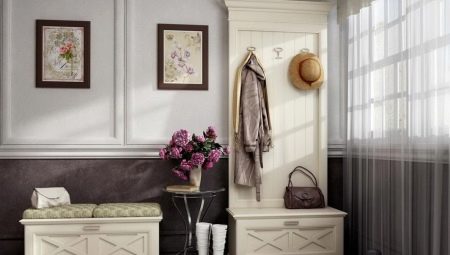
Provence-style hallways always look light, poetic and invariably bring a touch of real French charm and romanticism into the atmosphere of the living space. This choice is optimal for a small apartment or an old private house, in addition, the interior will certainly be appreciated by those who do not like to part with old things. It is noteworthy that the Provencal style can be created even with minimal financial costs - you do not need expensive facing materials and design decor elements.
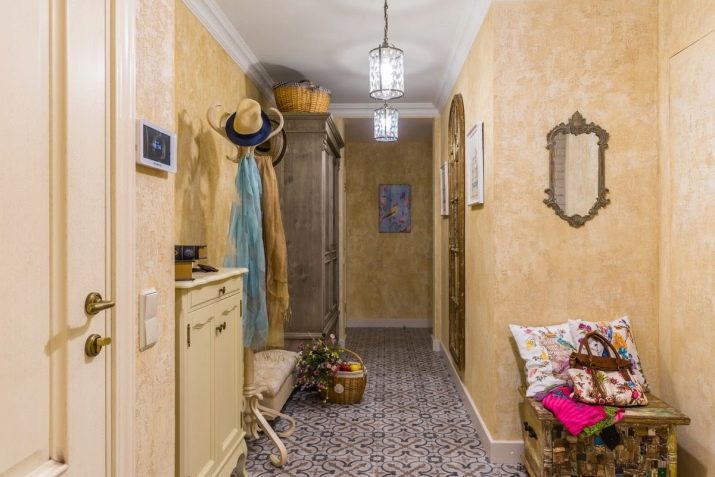
Style features
First, a little theory. The Provence style trend originated in the French province at the beginning of the 19th century. This style embodies the ideas of open space, its airiness and naturalness. Despite the presence of woody notes in the interior and its apparent simplicity, Provence looks harmonious not only in rural houses, but also in city apartments. This design contrasts favorably with public and austere office interiors and creates a sense of warmth and tranquility at home. - such an environment is just perfect in order to relax after a hard day at work.
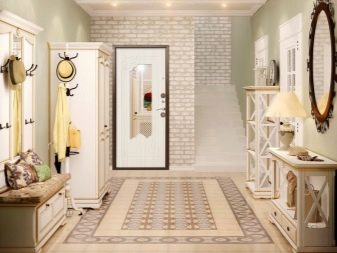
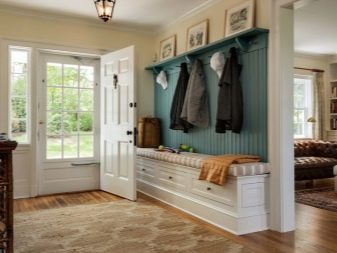
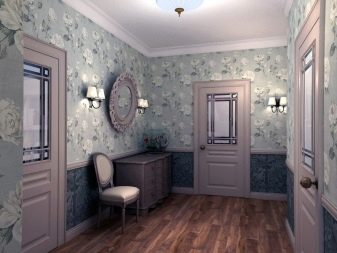
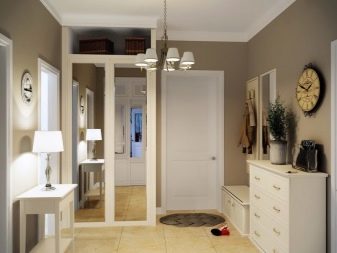
Provence is easily recognizable due to its distinctive features. This style is characterized by:
- artificial aging of surfaces - it can be chips and scuffs, uneven strokes of enamel and paint;
- use of natural materials - wood, linen, fresh and dried flowers;
- forged parts - they must be covered with white paint;
- using a light color palette - all shades of white are allowed, as well as nude colors;
- decorative plaster, brickwork;
- woody ceiling beams.
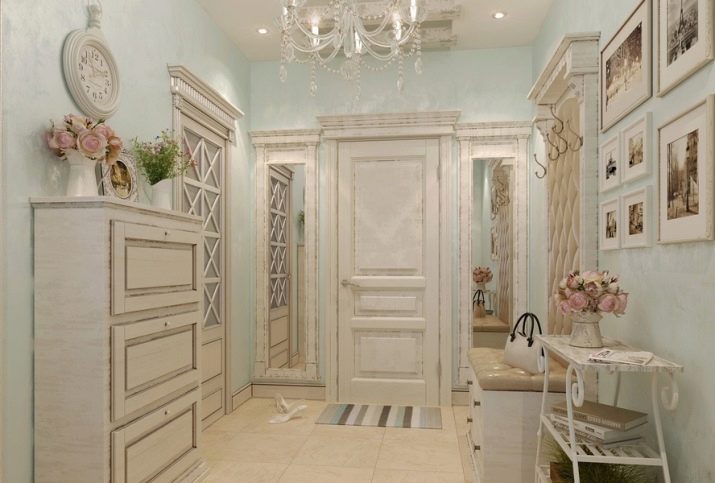
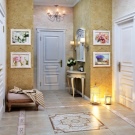



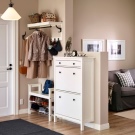
Provence does not accept any synthetic materials, gloss, mirror surfaces, as well as gloss and stylish futuristic elements are not allowed here.
Bright shades can be used, but only as accents in limited quantities, metal elements are made of tin, brass, bronze or their high-quality imitation.
We pay special attention to the fact that a Provence-style hallway must definitely set the tone for the entire home environment. You do not need to decorate it in a rustic style if you plan to furnish the rest of the rooms in a modern decor (high-tech, minimalism) or baroque, Provence does not combine with rich classics - the rustic unpretentiousness of the style, even separated from other rooms by walls, will be inappropriate and awkward ... You can combine Provence with boho or shabby chic directions.
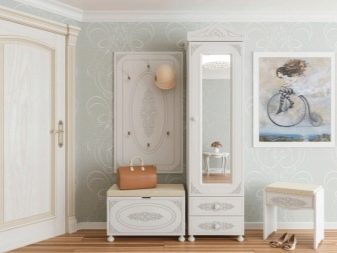
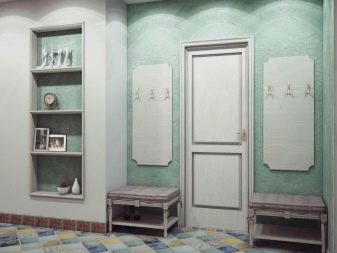
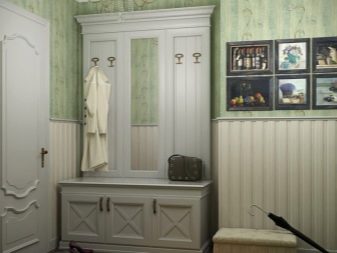

Choice of materials
The hallway performs a large functional load - here they take off dirty shoes, open wet umbrellas, put bags, as well as bicycles and strollers, so the room gets dirty quickly and requires frequent cleaning. This imposes certain requirements on the selection of finishing materials - they should not only fit into the style, but also be as practical as possible.
For wall decoration, it is best to use textured plaster. - the composition is applied with careless, deliberately sloppy strokes, it is better to give preference to milk, creamy and white-gray colors. At the same time, blues, lavender, pink and mint tones will be very appropriate.
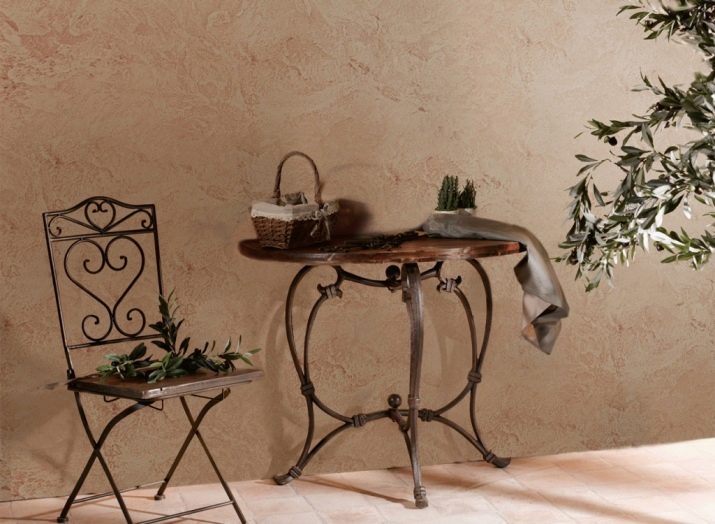
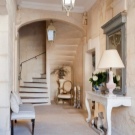

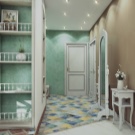
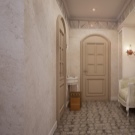
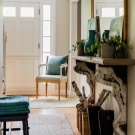
Keep in mind that plaster requires mandatory preparation of walls and knowledge of coating techniques, but it has undeniable advantages over other types of materials used - it is environmentally friendly, durable and easy to clean.
Another option for wall cladding is clapboard or board cladding with finishing tinting with white enamels and the obligatory aging effect. This option will cost a tidy sum, and in addition, it will significantly narrow the passage - such finishing options are suitable only for spacious hallways and therefore harmonious in country cottages, where all the decoration of the premises is made of wood. Significant savings can be achieved by using a combination of aged wood and plaster.


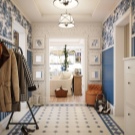

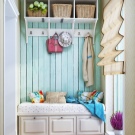
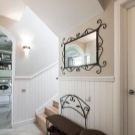
The use of wallpaper in decoration is also allowed., however, only with a certain print - a cage, a small flower, polka dots or small monograms look harmonious in Provence. Wallpaper imitating matting or linen texture is very effective, the patterns should look as if they were burnt out under the sun.
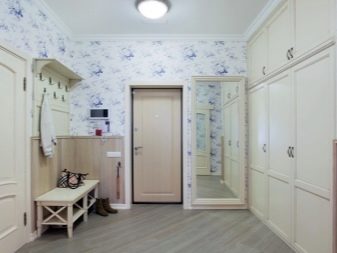
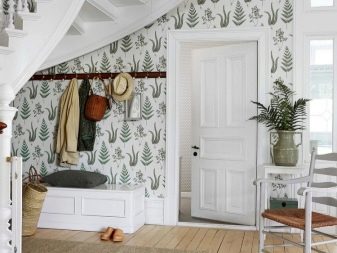
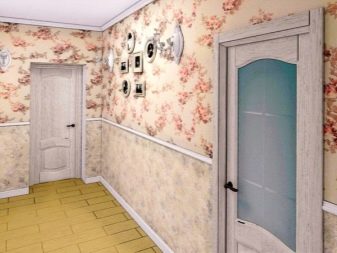
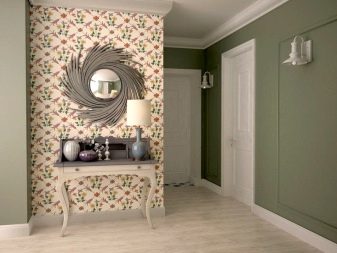
A distinctive feature of Provence is a room flooded with light. Unfortunately, in most typical apartments this is not possible, since the hallways do not have windows. Alternatively, you can install a fake catwalk with thin curtains, or take care of good lighting.
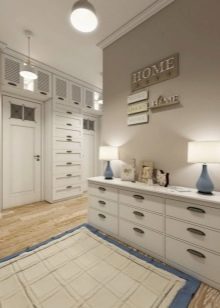
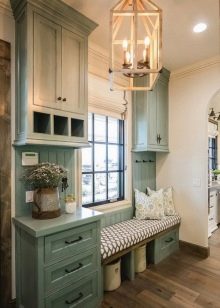
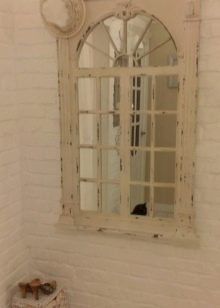
Provence flooring can be made in two versions. It is often used here either ordinary unpainted boards with a scuffed effect or laminate, which repeats the pattern of real wood. The second type of coating is slabs, usually of a light terracotta shade. With such a finish, you can achieve an imitation of a stone surface. The floor looks stylish, but the surface of the porcelain stoneware is very cold, and it is not entirely comfortable when entering the room from the street. Only the "warm floor" system can solve the problem, and this will entail considerable costs.
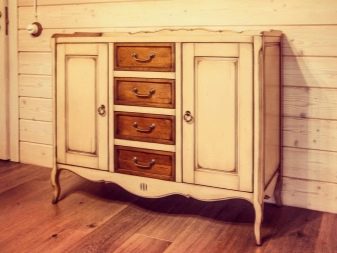

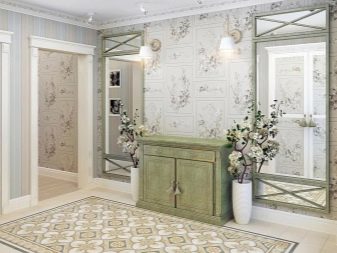
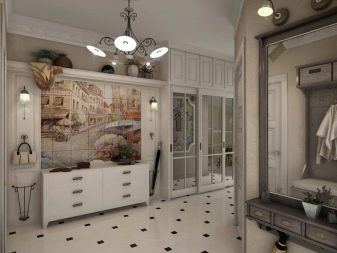
In the direction of Provence, carpet is not used, as well as self-leveling floors and linoleum. Alternatively, you can lay a small rug with a discreet print.
Textured plaster is used for finishing ceilings. An inexpensive but effective option would be whitewashing or covered with lime, while the ceiling should look as if it has been painted many times.A similar effect can be achieved with the most common paint brush.
If the space allows, wooden beams will be a very stylish addition to the interior. But this element can only be used if the ceiling height in the hallway is 3 m or more. This solution looks best in country houses with a mansard roof.

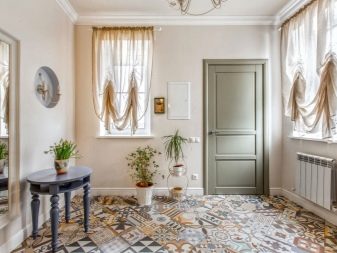
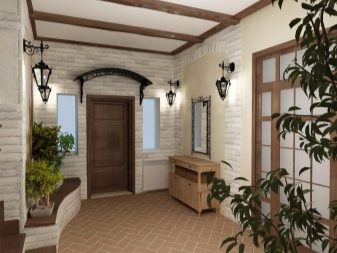
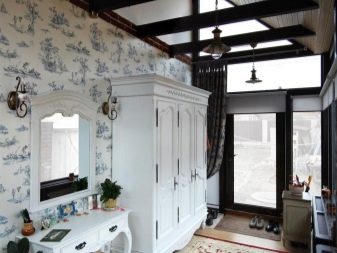
Multilevel and stretch ceilings for Provence are not used, and fanciful elements (stucco, patina and golden ornaments) do not look here either.
Selection of furniture
The hallway in the apartment is an active zone, so you need to take care not only of the beauty, but also of the functionality of the space. The hallway should have a wardrobe, shelves for shoes, handbags and umbrellas. Provence does not impose strict requirements on geometry - all pieces of furniture can be arranged in an arbitrary order, even chaotically.
Furniture for Provence is used only wooden, preferably light with traces of scuffs and artificial aging, traces of chips and cracking of the paint are allowed.
Style and small panels with clothes hooks are optimally matched, better to match doors in shade and texture.

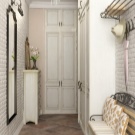

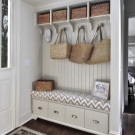
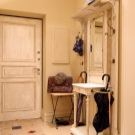
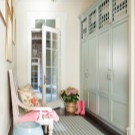
If you have a large hallway, then a wardrobe with swing doors will look spectacular. All modules should be low, since structures right up to the ceiling visually clutter up the space. At a height, it is advisable to hang a couple of shelves, and put vases with flowers on them.
In small rooms, it is better to stay on dressers. - they will make a stylish tandem with a vintage floor hanger.
Belonging to Provence can be emphasized by a wooden bench with soft cushions. Reed or rattan chairs are allowed. The atmosphere of antiquity will be enhanced by small sideboards and consoles.

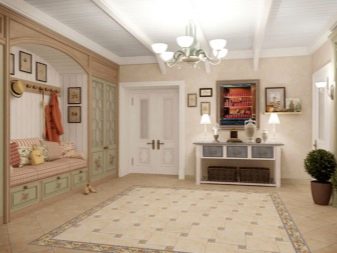
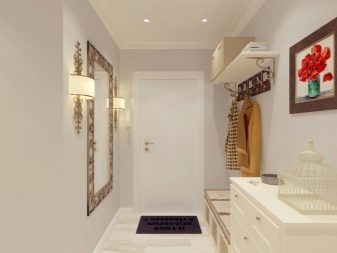
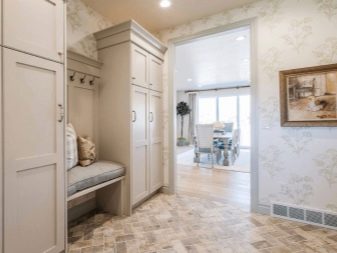
Modern wardrobes in Provence are not used, if you need a place to store things, then it is better to give preference to light modules with matte surfaces.
There should be large mirrors on the walls - preferably round or oval, always with wooden frames. If the space allows, you can install a large mirror - it is leaned against the wall opposite the window, in this case the sun's rays will be reflected, illuminating the darkest corners of the hallway.
In order to furnish a room, it is not at all necessary to go to antique shops - all furniture can be artificially aged using the crackle technique. In this case, a special enamel is applied to the surface, which creates the effect of burning out in the sun and small cracks.
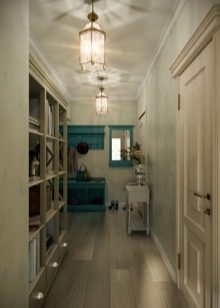


Color palette
To get into the style of Provence as accurate as possible, you should choose the right color palette. It is desirable that the colors used are light. White and beige shades work best. - they will be optimal for creating a general background of the interior, make the room refined and delicate. Such options are especially good for small rooms, since they visually expand the space, make it deeper and brighter.


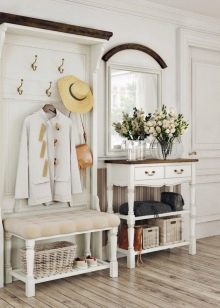
Unobtrusive accents can be set using purple, mint or olive color, shades of green look harmoniously - this is the color of nature, which brings a sense of femininity and comfort to the atmosphere of the hallway.
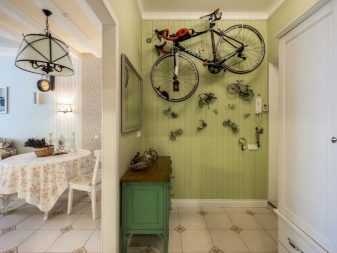
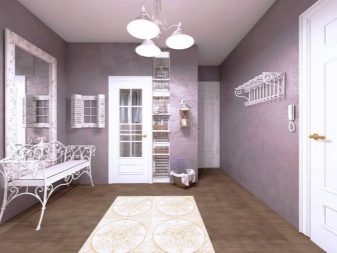
Peach, orange and yellow shades make the room more comfortable, but you should not overdo it with these tones - otherwise the room will turn out to be too gloomy, they are usually used as an addition to white and beige shades.
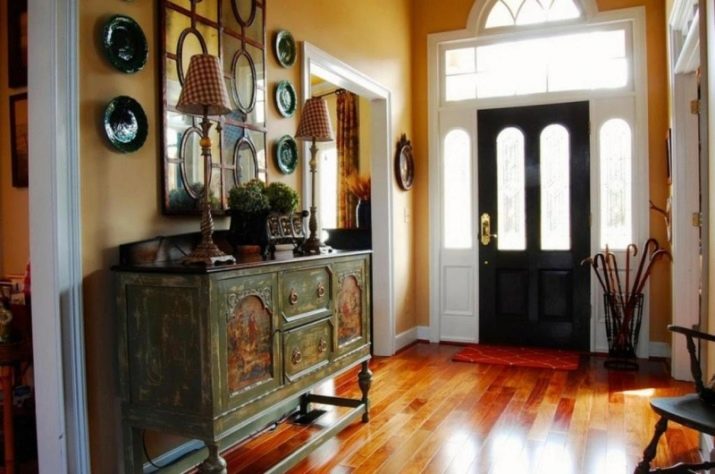
Interesting accessories
Provence is unthinkable without an abundance of stylish trinkets that will tie the whole space together, give a feeling of comfort and warmth. Usually, such hallways are decorated with objects made of wood and clay; live or dried flowers also look good.
In the hallway, decorated in accordance with the main features of Provence, you cannot do without textiles, therefore here you can often see bolsters, throws, cushions, and curtains with ruffles. Cloths must be natural - cotton or linen, only light colors are allowed. Provence is harmoniously complemented by lace and embroidery.
In Provence, chests, birdcages and candlesticks are welcome, it will be useful to place photographs in vintage frames and figurines on the chest of drawers, and straw panels can be hung on the walls.
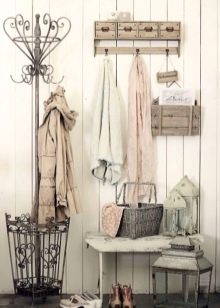
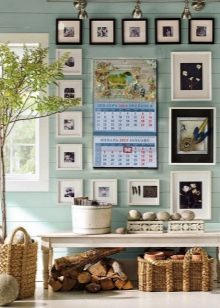

There are no restrictions on the type of decorative elements, the only condition here is the use of natural materials in the most discreet shades.
Design guidelines
Usually, hallways in modern apartments and typical houses do not have spacious, bright rooms, so Provence becomes the best solution for them. Authenticity can be achieved with the help of light design techniques that do not require significant financial costs from you. In the design of the premises, they adhere to several principles:
- all surfaces used in the design of the Provence style must certainly be worn and aged;
- the simpler the interior, the more effective;
- only light colors in the decoration are allowed;
- contrasts should be avoided;
- there should be a lot of light in the room;
- use decorating interior items in white and pink, lavender or terracotta colors;
- forged parts look harmonious in the interior - these can be corners, hangers or metal handles;
- plaster looks spectacular on surfaces with exposure of fragments of brickwork;
- the floor should be either wooden or imitate the texture of wood;
- ceiling beams are allowed in older houses.



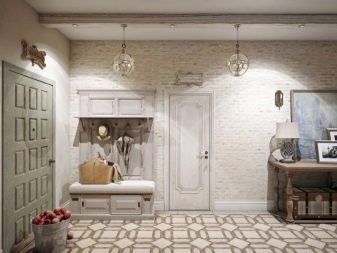
Beautiful examples
The Provence style looks harmoniously for the design of a narrow and small hallway, as well as in a room with a long corridor. The use of basic design techniques allows you to create a feeling of lightness, airiness and rural romance.

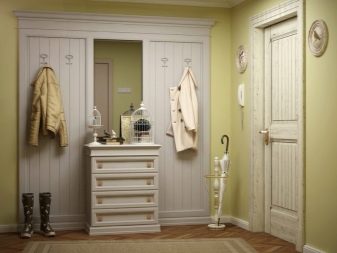
Accessories look harmonious - vintage modular blocks, wall corner hangers.
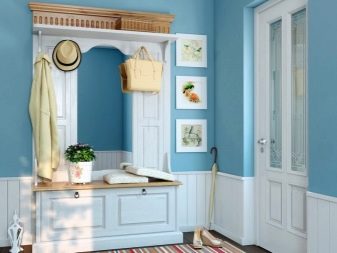
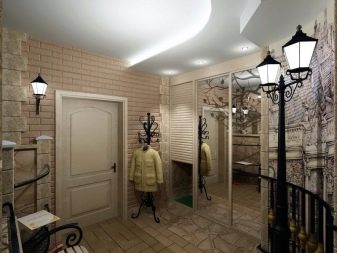
There are no ready-made solutions for decorating Provence - a wide variety of little things are allowed here: vases, beautiful textiles, paintings, panels, baskets, sofa cushions and many other elements that make the style as accurate as possible.

For what characterizes the Provence style in the interior, see the next video.








